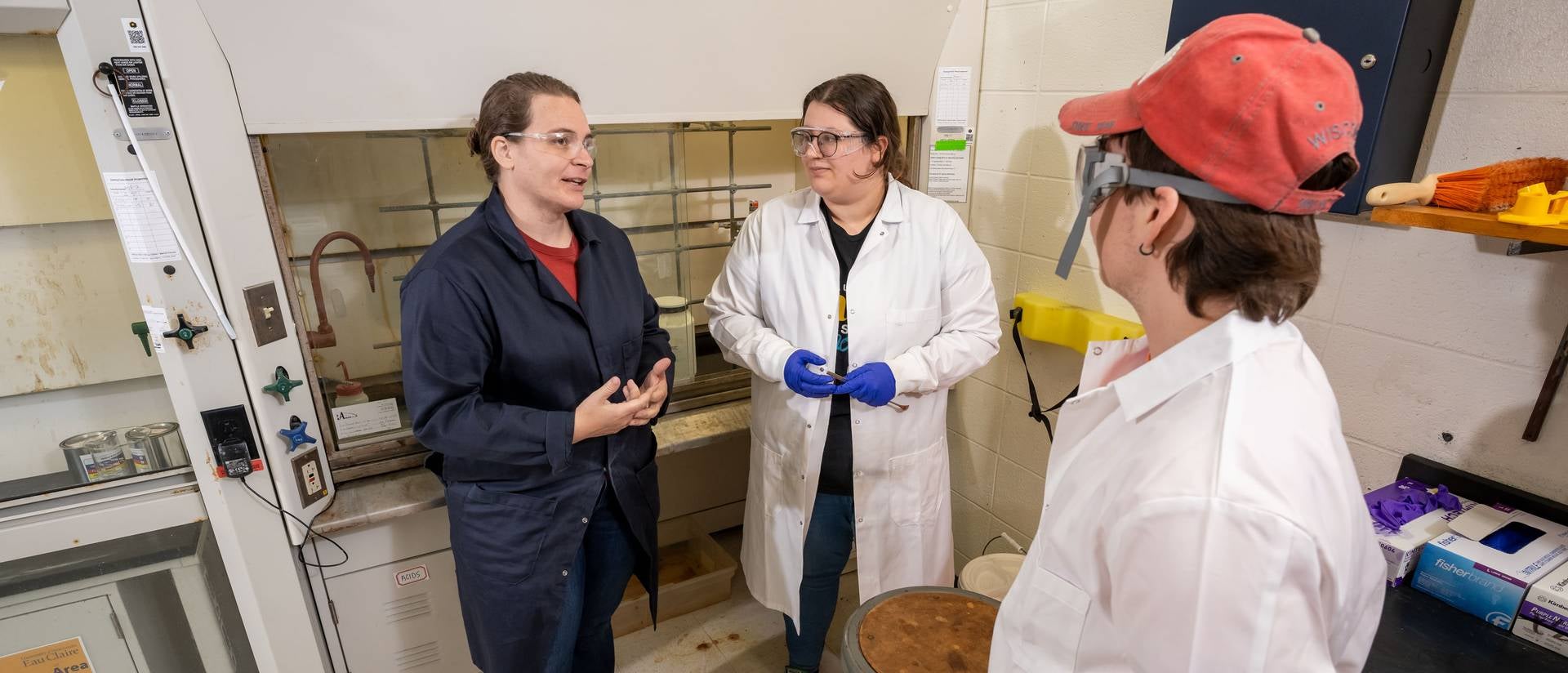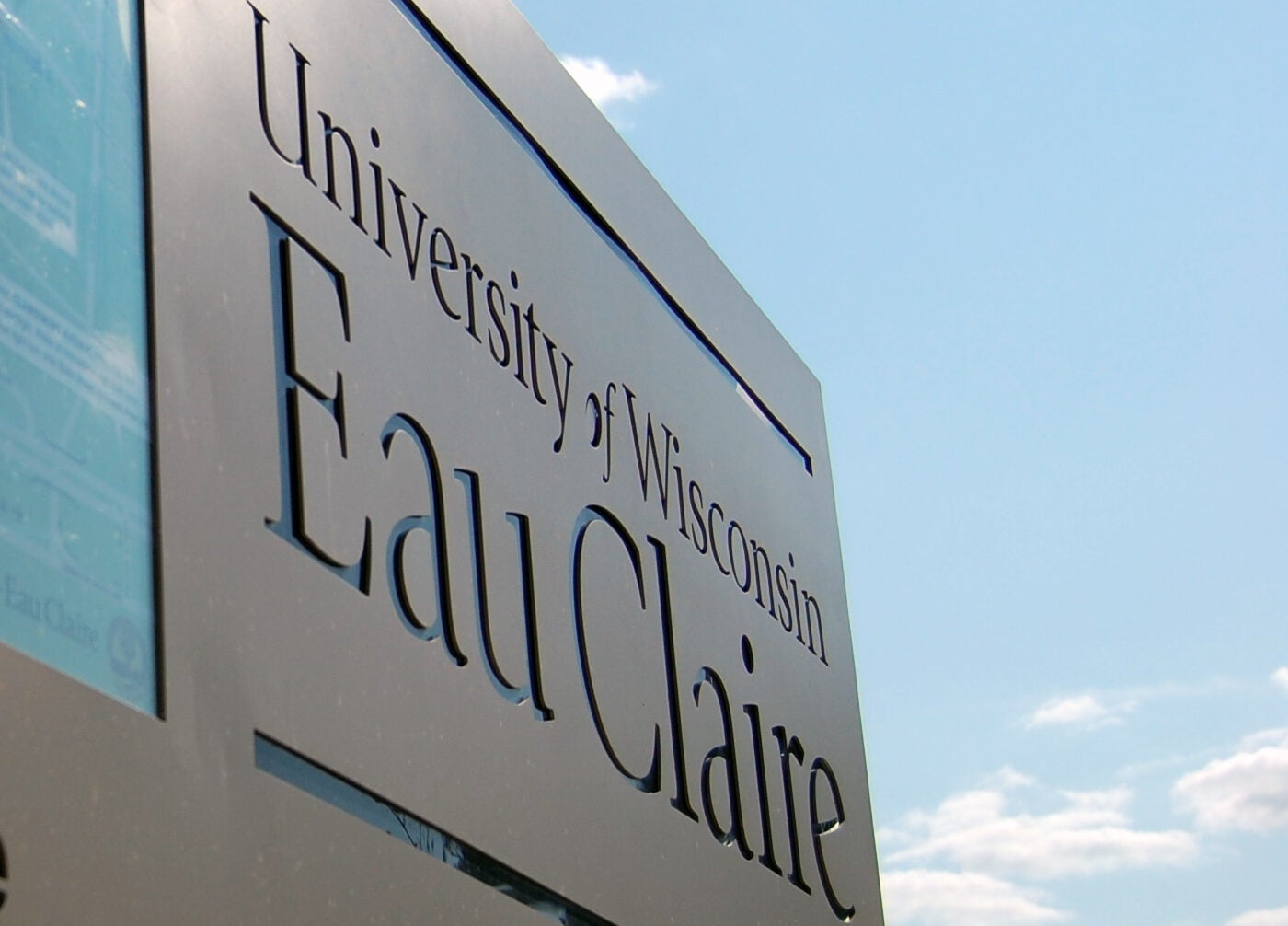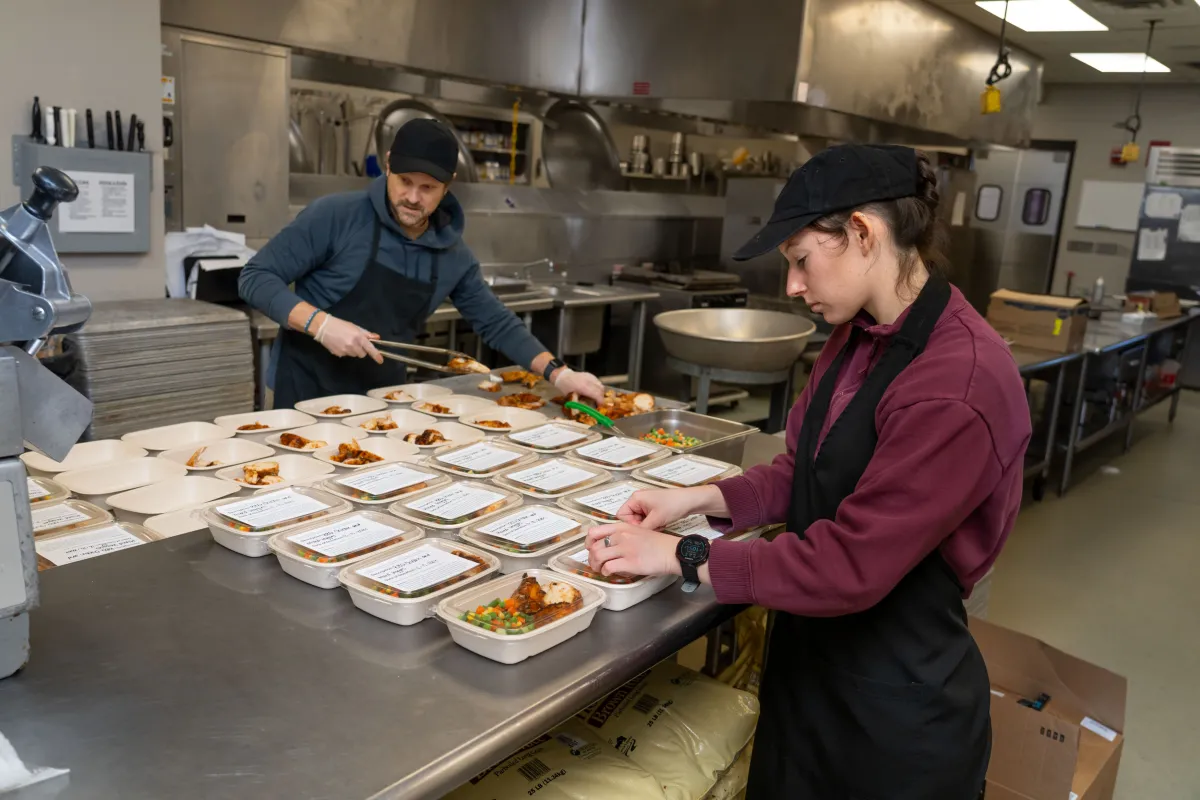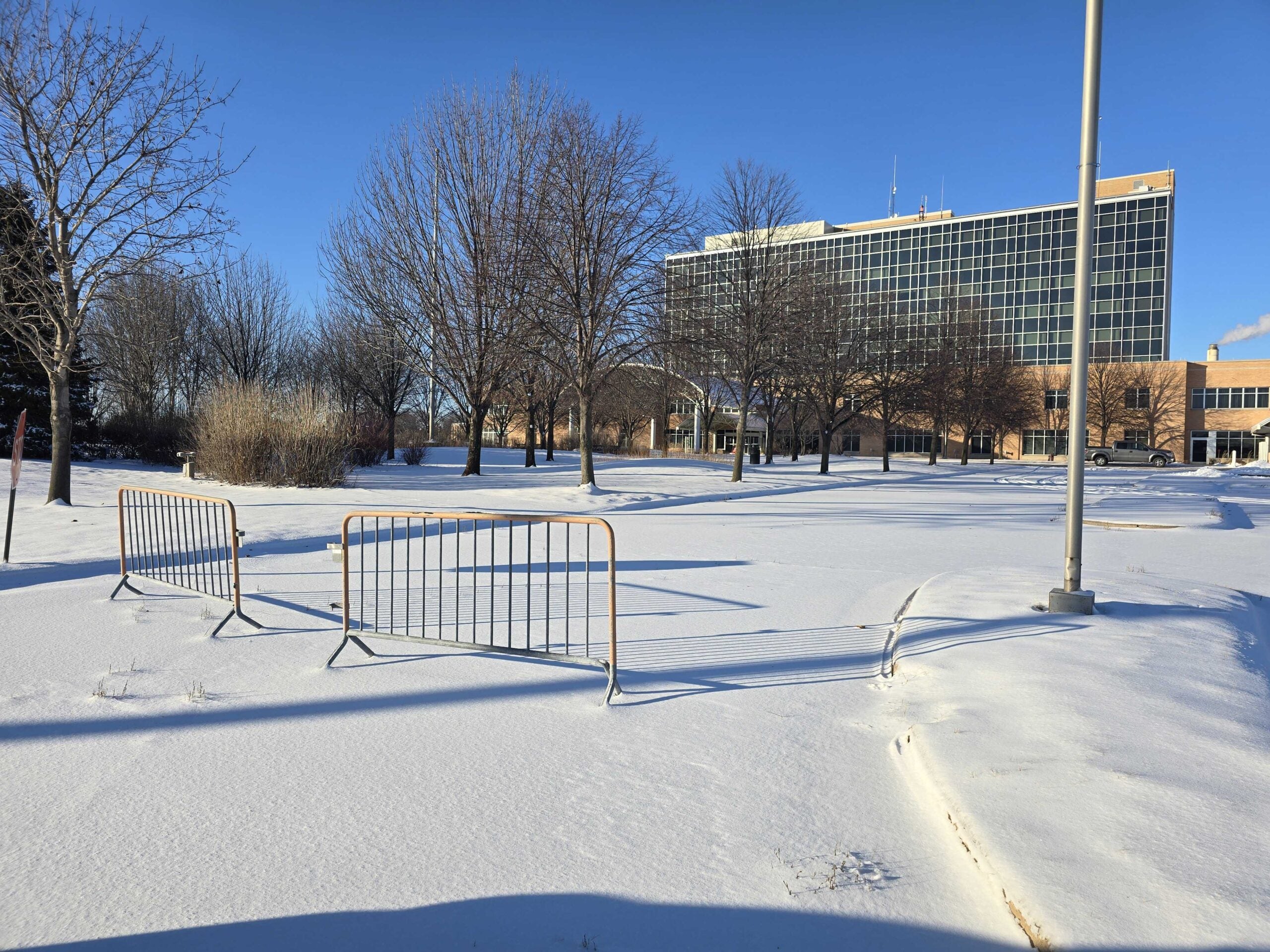While college students are often known to spend their summers partying, Jackie Bradley, a chemistry major at the University of Wisconsin-Eau Claire, has spent hers in the lab.
As part of a partnership between the university and a small Wisconsin manufacturer, she’s been working on a U.S. Department of Defense contract to develop an environmentally-friendly, anti-corrosive pigment that can be mixed into paint used on military equipment.
While she knew she had signed up to work on a paintings and coatings project that would provide real-world lab experience, she didn’t immediately know it was for the Defense Department.
Stay informed on the latest news
Sign up for WPR’s email newsletter.
“I didn’t find out what it was for until maybe a month or two after I started working on it,” she recalled. “When I found out this is for the Department of Defense, it’s like, ‘Oh, okay, so we are doing big stuff.’”
UW-Eau Claire received a $231,709 government subcontract to help Oak Creek manufacturer WPC Technologies develop an anti-corrosion pigment that can be applied to steel and several types of aluminum. The company had previously made a similar anti-corrosive that can be used on a specific type of aluminum in aircraft.
The university and the company are about six months into what will be a two-year project.
In a statement, WPC Technologies CEO Brent St.John said the company partnered with UW-Eau Claire because it liked the college’s approach to dealing with commercial companies. He also said the scale of the lab being used fit the project.
“We need a steady stream of good chemists,” St.John said. “I hate using the phrase ‘win-win,’ but it really is. It’s a chance for students to see a real-world application for what they work on in class at the university.”
UW-Eau Claire’s effort is being led by Deidra Gerlach, associate professor of chemistry and biochemistry. Gerlach said the project is the first of its kind at the school. She hopes it lays the groundwork for future industry collaborations.
University officials say the project builds on a $400,000 grant UW-Eau Claire received from the National Science Foundation last year to boost industry collaboration.
Gerlach said the project is helping her students develop critical thinking skills in a research setting, while also giving them a chance to network.
In May, Gerlach took the two students working on the project down to Oak Creek to visit WPC Technologies. While there, Gerlach said her students met and interacted with chemists who had doctorates, masters and bachelors degrees.
“They get to see all these different education levels operating in the same room, working on the same problem and seeing the way that our different experiences, our different education levels, all kind of contribute toward the same problem,” Gerlach said of the visit.
Bradley, who will be a senior this fall, said she plans to go to graduate school after getting her bachelor’s degree, but this project has helped her network and improve her communication skills.
“I have business cards from people at these different companies and they know my name now, or at least have a name to put on my face,” she said. “That’s super helpful when looking for jobs and everything because if you’re giving somebody a resume or you send them in online, they don’t really see your face.”
In addition to giving students hands-on research and development experience, Gerlach said the project contributes to the United States’ national security.
She said military vehicles are often exposed to “really harsh environments,” where they get intense sunlight or salt sprayed from the ocean in the case of an aircraft carrier.
Having a robust anti-corrosive product that is non-toxic, Gerlach said, is a “game changer” because it helps America project a strong image abroad.
“If your equipment looks rusty, you look weak,” she said. “For the United States military, a lot of making sure that we are not getting into a conflict is by not looking weak.”
Wisconsin Public Radio, © Copyright 2025, Board of Regents of the University of Wisconsin System and Wisconsin Educational Communications Board.




